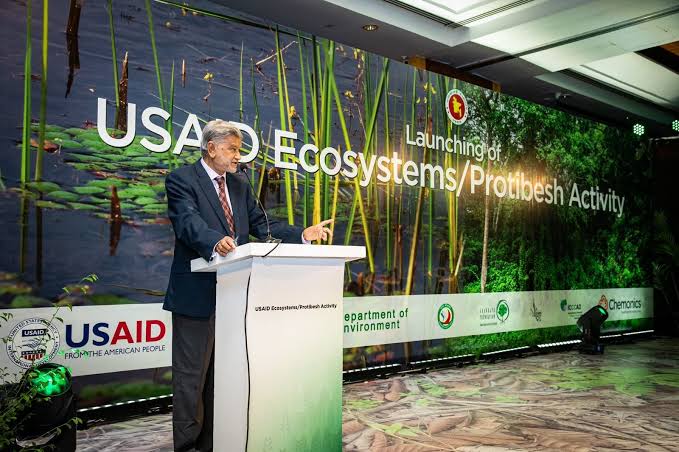United States Agency for International Development (USAID) has announced the launch of a five-year USAID Ecosystems/Protibesh activity, worth up to $20.5 million to protect critical biodiverse areas in Bangladesh from degradation.
USAID Deputy Administrator for Policy and Programming, Isobel Coleman, who announced the launch during her trip to Bangladesh, said that the program targets two key areas including the Sundarbans mangrove forest, a UNESCO World Heritage site and home to the Royal Bengal tiger, and forest and freshwater wetland ecosystems of the Sylhet border region in northeastern Bangladesh.
She explained that the project would also help communities build long term climate resilience by adopting climate-smart agriculture approaches and learning business skills to diversify and increase their incomes, moving away from reliance on natural resources from forests for their livelihoods.
Read also: ECOWAS, NATO meet to tackle climate change
The new Protibesh program builds on a long history of partnership between USAID and the Government of Bangladesh and local community leaders to protect and sustainably manage the country’s biodiverse landscapes and ecosystems.
Protibesh will be locally led by community members and GOB counterparts, including the Ministry of Environment, Ministry of Planning, Ministry of Fisheries and Livestock, Ministry of Land, and the Bangladesh Forest Department. This is in keeping with lessons learned from previous interventions to strengthen environmental governance and sustainable forest and wetland management.
It is expected that Bangladesh will be able to combat the effects of climate change, protect the country’s critical natural resources––a rich source of life and livelihoods for the people of Bangladesh––and build resilience to climate-induced natural disasters.
With the help of USAID in the past 25 years, Bangladesh has made great strides in combating climate change and strengthening environmental conservation. USAID has also worked with local communities and government officials to protect more than 2.5 million acres of wetlands and forest areas over the same period.
Story was adapted from USAID.
